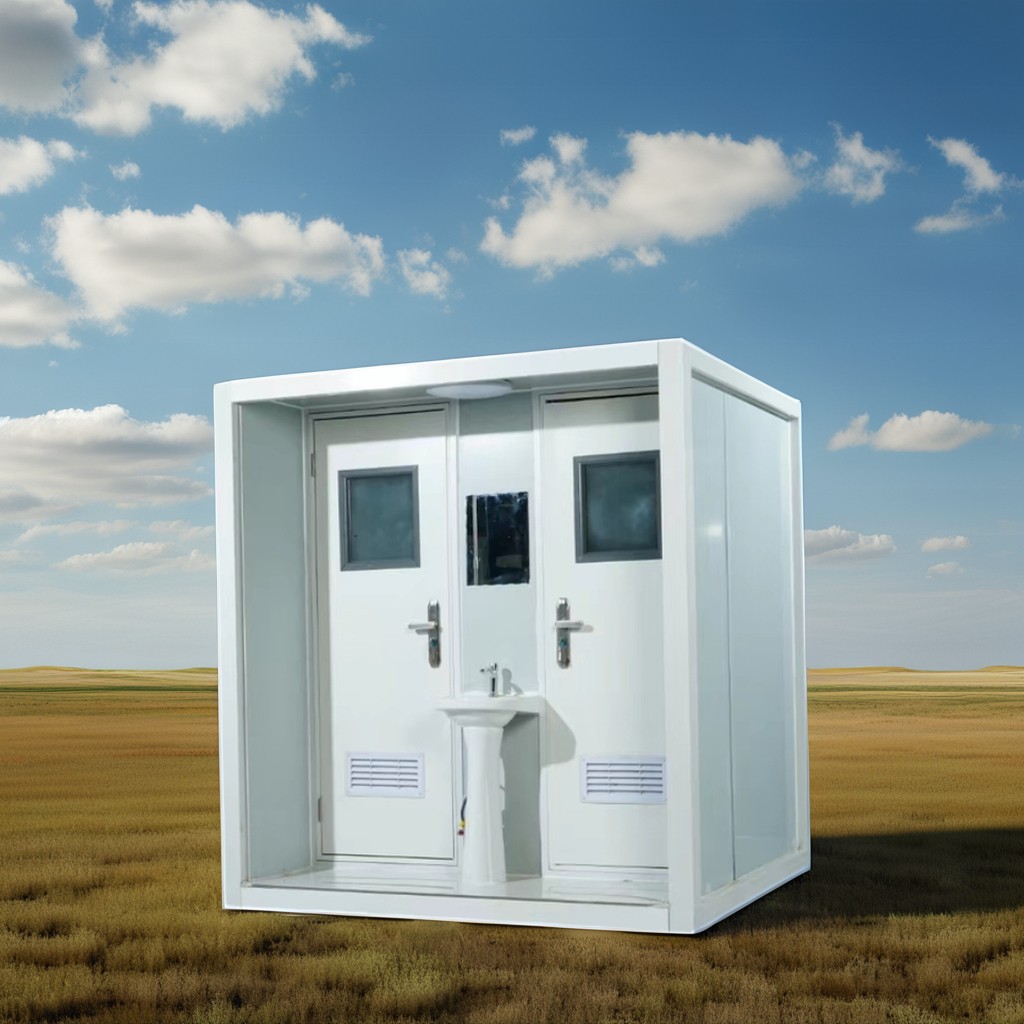What Makes Portable Toilets More Sustainable Sanitation Solution?
2025-10-14
Portable toilets, also known as mobile or chemical toilets, are self-contained sanitation units designed to provide convenient and hygienic restroom solutions wherever permanent facilities are unavailable. From large outdoor events and construction sites to camping grounds and disaster relief zones, portable toilets play a crucial role in maintaining public health and environmental sanitation.
Unlike traditional restroom facilities that depend on plumbing systems and water supply, portable toilets operate independently with built-in waste containment tanks and odor control mechanisms. This design allows them to be easily transported, installed, and maintained, making them essential for temporary or remote locations.
The increasing demand for portable sanitation solutions is driven by several global factors:
-
Rapid urbanization and infrastructure development projects.
-
Growing emphasis on hygiene and sanitation in public spaces.
-
Rising popularity of outdoor recreational activities and festivals.
-
Environmental concerns and sustainable waste management initiatives.
Why Are Portable Toilets Considered a Smarter and More Sustainable Option?
The evolution of portable toilets has significantly enhanced their design, materials, and environmental performance. Modern units are engineered to deliver comfort, efficiency, and hygiene while minimizing ecological impact. Below are key reasons why portable toilets have become a preferred choice across industries and public events:
A. Hygiene and Health Protection
Advanced models come with hands-free flushing systems, antibacterial coatings, and sealed waste tanks that prevent odors and contamination. Some units include built-in sanitizers or waterless urinals, which help conserve resources and reduce maintenance needs.
B. Mobility and Convenience
Portable toilets are designed for quick setup and removal. They can be placed in virtually any outdoor location — from high-rise construction sites to remote festival grounds — without the need for plumbing infrastructure.
C. Cost Efficiency
The low installation and operational costs make portable toilets an economical solution for temporary sanitation needs. Companies and event organizers can rent or purchase units depending on the duration and scale of use.
D. Environmental Responsibility
Modern portable toilets are engineered with eco-friendly materials and employ waste treatment chemicals that are biodegradable and safe for the environment. Many advanced systems incorporate water-saving flush mechanisms and solar-powered ventilation systems.
E. Technological Advancements
Some portable toilets now feature smart monitoring systems that track usage, waste levels, and cleaning schedules. This innovation ensures timely maintenance and helps operators manage large fleets efficiently.
Below is a table summarizing typical Portable Toilet Specifications and Features that reflect current market standards:
| Feature | Specification |
|---|---|
| Material | High-density polyethylene (HDPE) – UV and weather resistant |
| Waste Tank Capacity | 50–80 liters |
| Flushing System | Manual pump or hands-free foot pedal |
| Ventilation | Air vent or solar-powered fan |
| Dimensions | 1100mm (W) x 1200mm (D) x 2300mm (H) |
| Weight | 80–100 kg |
| Accessories | Tissue holder, hand sanitizer dispenser, mirror, coat hook |
| Color Options | Blue, green, grey, customized branding available |
| Cleaning Interval | Every 1–3 days (depending on use) |
This balance of convenience, hygiene, and eco-conscious design positions portable toilets as the leading solution for modern sanitation challenges.
How Are Portable Toilets Shaping the Future of Sanitation Infrastructure?
The future of portable toilets is guided by innovation, sustainability, and smart technology integration. As industries and governments emphasize cleaner and more efficient waste management systems, portable toilets are evolving to meet global sanitation goals and user expectations.
1. Smart Monitoring Systems
IoT-enabled portable toilets are transforming sanitation management. Equipped with sensors that monitor waste levels, temperature, and odor, these systems send data to centralized dashboards, enabling operators to optimize cleaning routes and reduce downtime.
2. Eco-Friendly Materials and Chemicals
Manufacturers are adopting bio-based plastics and green chemicals that reduce carbon emissions during production and use. Biodegradable waste treatments neutralize odor without harming the environment, aligning with green building certifications and sustainability standards.
3. Water and Energy Conservation
Future portable toilets will rely heavily on waterless or low-flush designs. Solar panels integrated into units power lighting, ventilation, and even self-cleaning systems, reducing dependence on external resources.
4. Enhanced User Experience
Designers are prioritizing comfort and inclusivity, with models offering spacious interiors, anti-slip flooring, ventilation systems, and accessibility features for users with disabilities. High-end units even include LED lighting, mirrors, and running water sinks.
5. Circular Waste Management
A major trend in sanitation is the reuse and recycling of human waste. Portable toilets are being integrated into systems that convert waste into biogas or compost, contributing to renewable energy production and sustainable agriculture.
6. Modular and Scalable Design
Manufacturers now create modular toilet units that can be configured into larger mobile sanitation facilities. These scalable systems are ideal for disaster relief operations, refugee camps, and large-scale public events.
With these advancements, portable toilets are not just temporary solutions—they are becoming permanent contributors to the global sanitation infrastructure, particularly in areas lacking stable water and sewage systems.
Common Questions About Portable Toilets
Q1: How often should a portable toilet be cleaned or emptied?
A portable toilet should typically be cleaned every 1 to 3 days depending on its usage and capacity. For construction sites with continuous use, daily servicing may be necessary. Cleaning includes waste removal, chemical replenishment, surface disinfection, and deodorization. Regular maintenance ensures hygiene, prevents odor buildup, and prolongs the lifespan of the unit.
Q2: Are portable toilets environmentally friendly?
Yes. Modern portable toilets are designed with environmental sustainability in mind. They use non-toxic, biodegradable chemicals for waste treatment and odor control. Many models feature waterless or low-flush systems, significantly reducing water consumption. In addition, recycled materials are commonly used in manufacturing, and waste can be processed through eco-safe disposal or composting methods.
How Cymdin Leads the Market with Innovation and Quality
As the global demand for efficient, sustainable, and user-friendly portable toilets continues to grow, Cymdin stands at the forefront of innovation and reliability. The company offers a diverse range of portable sanitation products tailored for construction sites, outdoor events, and emergency applications. Each unit is built with durable, weather-resistant materials, advanced ventilation, and ergonomic design to ensure user comfort and hygiene.
Cymdin’s commitment extends beyond manufacturing quality; the brand emphasizes sustainability through water-saving technology and eco-friendly materials. The company’s R&D teams continuously explore ways to integrate smart systems that simplify maintenance and enhance customer convenience.
For organizations seeking dependable sanitation solutions that combine performance, safety, and environmental responsibility, Cymdin’s portable toilets provide the perfect balance of functionality and innovation.





